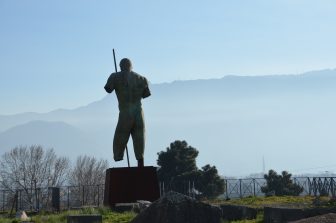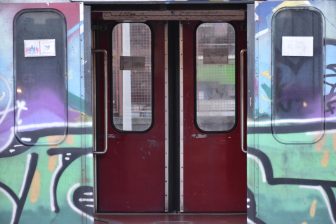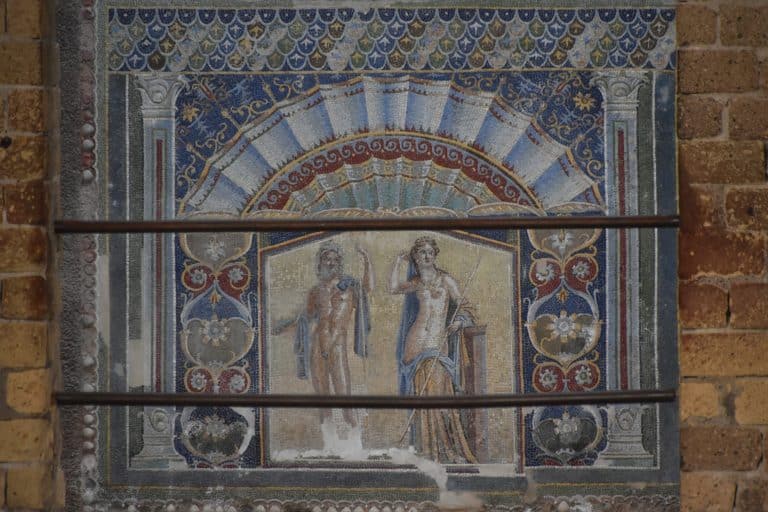
[Dec. 2024] On this day, we visited the ruins of Ercolano (Herculaneum) near Naples in southern Italy.
We had booked a guided tour.
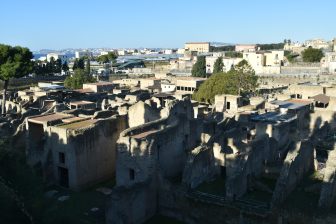
There were no signs to the ruins at Ercolano Station on the Circumvesuviana railway, so we asked someone.
It was a little over 10 minutes walk and pretty much straight, so we didn’t get lost.
The English speaking guide waiting for us was Ivan, a cute guy with big, round eyes.
However, he was not Russian, but a proper Italian.
Only us and another family participated.
Like the famous Pompeii nearby, Ercolano was a town buried by the eruption of Mount Vesuvius in 79 AD.
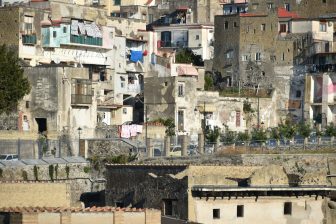
It was discovered by a farmer in the 18th century, 10 years before Pompeii.
What we can see now is only about 20% of the whole town.
The remaining area apparently contains theatres and temples, but is now densely built with residential buildings.
This was clearly visible.
When asked if the excavations are still ongoing, Ivan replied, “No. It’s better not to even mention it.”
This remark of him made me realise that dark forces are really rampant around here.
Ercolano was a residential area, while Pompeii was a commercial city.
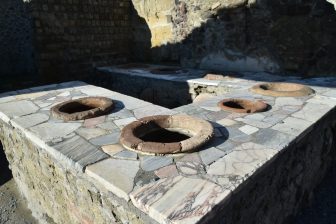
It is said that Ercolano had a system for purifying the town.
Following the basic method of building a town by the Romans, the streets here are laid out in a grid pattern.
On the street corners, there are remnants of bars made of marble arranged in an aesthetic way.
As with many other places, there are also remains of bathhouses, which were important to the Romans.
The baths are separate for men and women.
In the semicylindrical shape room that was supposedly a changing room, traces of detailed decorations could be seen.
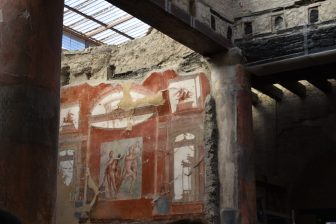
At its peak, Ercolano had a population of about 5,000, of which 10% were wealthy aristocrats.
The remaining 50% were slaves, and 40% were free people without citizenship rights.
The free people built temples to worship Augustus, whom they considered a god, and its colourful walls remain.
Colourful murals could also be found in middle-class homes.
People who did not have the financial means to have a garden would enjoy by painting pictures of their gardens on the walls.
Slaves and laborers lived on the upper floor of these detached houses.
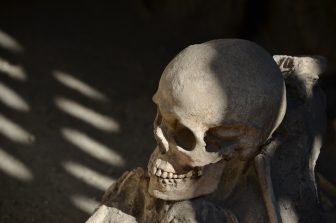
What made the biggest impression on me were the skeletons scattered around the remains of the docks.
However, this is not the real thing; it was recreated after geological research revealed that this is how people who fled the volcanic eruption and headed for the sea died.
After all, it’s best to tour the ruins with a guide.
I don’t think it would have been as interesting if we had seen it on our own.
By the way, if you’re planning to see both Ercolano and Pompeii, I recommend seeing Ercolano first, like we did.

